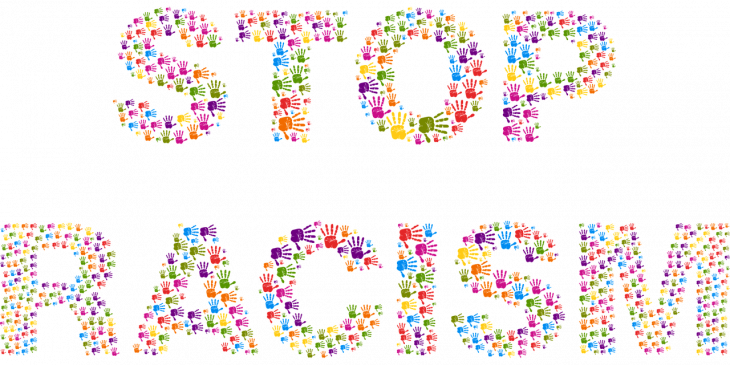
- What It Is: Discrimination based on the biological differences between people
- Ethnicity too? The term racism can also describe discrimination against people of a certain ethnic group
- Examples of Racist Beliefs: Xenophobia, Supremacism, Pseudo-scientific racism
- Examples of Racist Behaviors: Discrimination, prejudice, verbal and physical assault
- Examples of State-sanctioned Racism: Segregation, slavery, genocide, inequality, police brutality
- Notable Historical Instances: The Transatlantic Slave Trade, European Imperialist policies, U.S. Segregation, Apartheid, The Nazi State
- Examples of Racist Organizations Today: Neo-Nazi Groups, British National Front, Ku Klux Klan
- Anti-Racism Movements in History: The Anti-Apartheid Movement, The Civil Rights Movement
- Anti-Racism Organizations Today: European Commission Against Racism and Intolerance, Youth Against Racism, Anti-Racist Action
- Legal Opposition: The United Nations, The European Union, UNESCO and many other world organizations
- Society: Racism Involves Prejudice and Discrimination
- Society: There Are Many Definitions of Racism
- Society: Racial Stereotyping Is Also an Issue
- Society: The Terms “Race” and “Ethnicity” Are Often Used Interchangeably
- History: Racism Underpinned the Transatlantic Slave Trade
- History: In the USA Racial Segregation Followed Slavery
- History: Apartheid Was Another Period of Racial Segregation
- History: The Nazi State Practiced Ethnic Supremacism
- History: Discrimination Can Lead to Genocide
- Politics: Racism Is Condemned by the United Nations
- Politics: Racism Is Banned by the European Union
- History: Scientific Racism Has Been Historically Damaging
- Society: Racism Is Not Just Practiced by a Majority towards a Minority
- Society: Neo-Nazism Is a Problem on the World Stage
- Society: Crime Statistics Show Racism in the Judicial System
- Anti-racism Has Been a Strong Force in History
- There’s an International Day for the Elimination of Racial Discrimination
- In 2008, Barack Obama Became the First African American President
- Martin Luther King Made History with a Speech
- In Britain You Can “Love Music Hate Racism”
Racism Facts Infographics
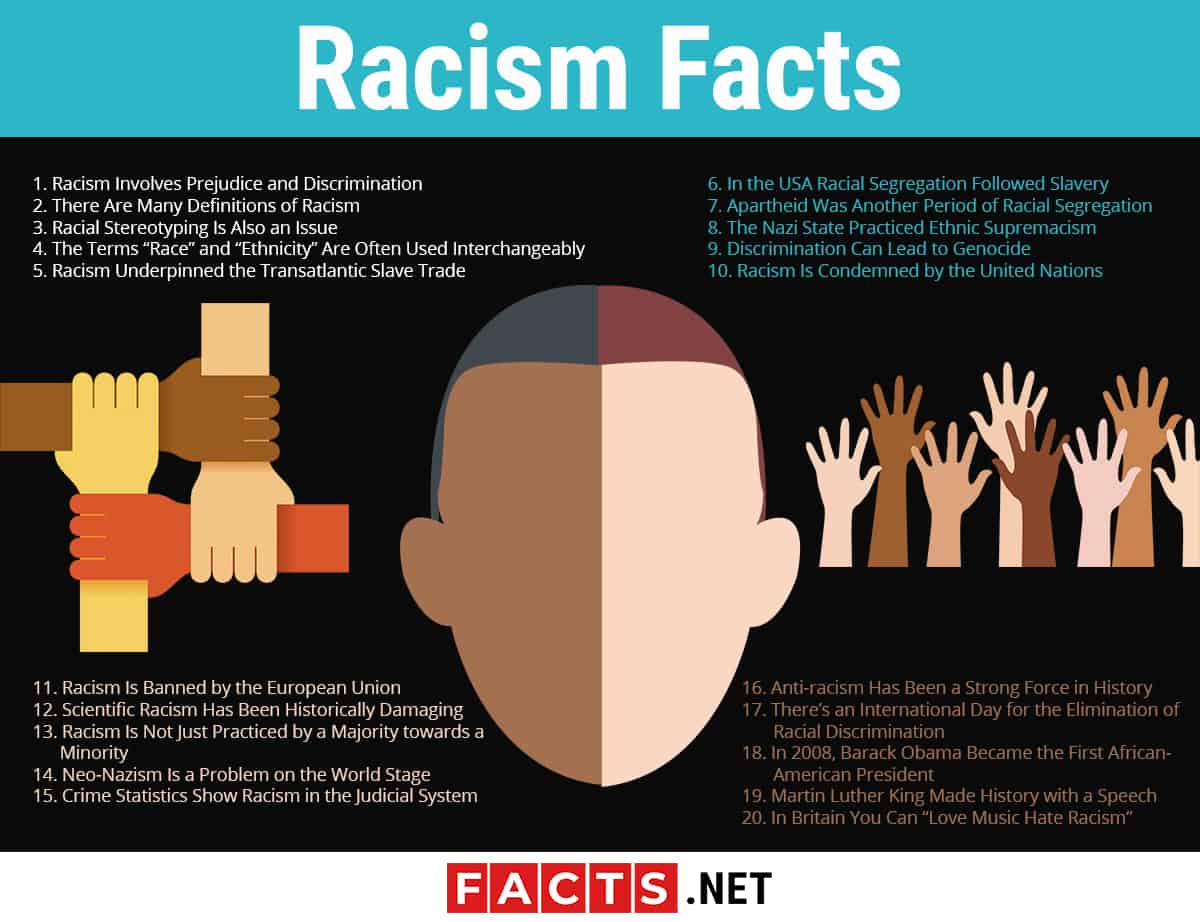
Racism Involves Prejudice and Discrimination
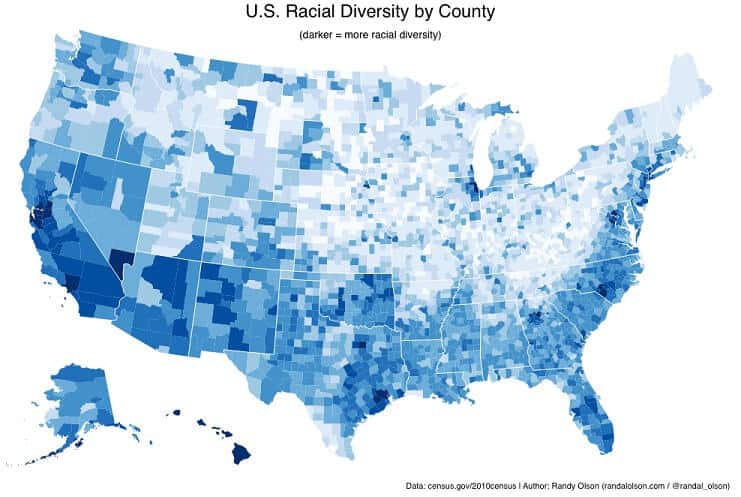
The most seemingly basic of racism facts − the issue of defining exactly what it is − can actually be very problematic. Racism involves prejudice and discrimination based upon perceived ideas about the biological differences between people. Racism can emerge in social beliefs and practices, or in political systems that differentiate between people based on racial or ethnic qualities. It involves the assumption that people of a particular race share inherent traits, abilities and qualities, and often that people of different races deserve different kinds of treatment within society. The term is used in a negative sense, and is often associated with practices such as prejudice, violence, discrimination and oppression based on racial differences.
There Are Many Definitions of Racism
In order to adequately discuss racism facts, it is first necessary to consider the many beliefs and behaviors which might count as racism. In certain branches of the Social Sciences, only consciously malignant discrimination based on race or ethnicity is considered to be racism. Behaviors which would confirm to this pattern include Xenophobia, which is the irrational and intense hatred and fear of people from a different race. There is also Supremacism, which is the belief that a certain racial or cultural group is superior to another, and therefore has the right to dominate the latter group. Segregationalism is another key example of active and malignant racism. This is the belief that humans should be separated into their racial groups during the activities of daily life, in situations ranging from eating in restaurants and attending school to riding on public transport.
Racial Stereotyping Is Also an Issue
Another way of interpreting racism facts is to consider not just conscious forms of discrimination, but also unconscious prejudices and stereotypes. This means that to make a generalization about someone based on their race or ethnicity, for example in a paradigm such as “All white people do X, all black people do Y”, is also inherently racist. This form of racism is much more pervasive and difficult to define, and can occur in forms such as institutionalized discrimination, racism within social and economic stratification, and the propagation of racial and ethnic stereotypes in the media.
The Terms “Race” and “Ethnicity” Are Often Used Interchangeably
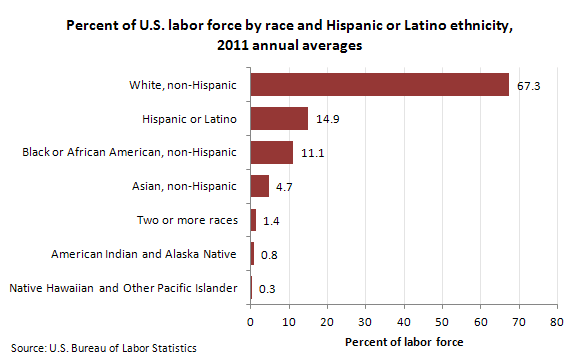
While we may be discussing racism facts, ethnicity is also an issue here. The two terms are often used interchangeably, and sometimes taken to mean the same thing. In the Social Sciences, however, ethnicity refers to a socially-defined category of people who identify with one another based on shared ancestral, social and cultural experiences. These factors can include homeland, language, religion, history and so on. Race, on the other hand, is the biological aspect of this identification − the genetic make-up and physical attributes that distinguishes each group. In this way, a person may have one race, but several ethnicities, for example, a Caucasian person of Irish-American descent.
Discrimination based on social perceptions of a person’s ethnic group is often described under the umbrella term racism . As the UN convention points out, there is no moral difference between racial or ethnic discrimination, since both are scientifically false, socially unjust and morally reprehensible.
Racism Underpinned the Transatlantic Slave Trade
There are innumerable tragic racism facts from history, but one of the most far-reaching series of events was the transatlantic slave trade. This occurred from the 16th through to the 19th century. The majority of those enslaved were West Africans, who were sold to European slave traders and transported to the New World. The Portuguese were the first to engage in the New World slave trade, but other European nations soon followed suit. During the late 17th and early 18th centuries, these nations were vying to build overseas empires and saw slavery as a key to success. The South Atlantic economy into which these slaves were taken produced commodity crops, such as sugar, cotton, coffee, cocoa and tobacco. Other work included labor in mines, rice fields and the construction industry. By the mid-1700s, the process was so fully institutionalized that slaves and their offspring were considered the legal property of their owners.
In the USA Racial Segregation Followed Slavery

There are many essential racism facts regarding the abolition of slavery in the USA and the events which followed. In 1863 the Emancipation Proclamation was passed, and after the American Civil War ended in 1865, the 13th amendment abolished slavery in law. What followed was a Reconstruction Era in which the USA reorganized many aspects of federal structure. In the former Confederate states, a series of laws were passed at the end of the 19th century. These were called “Jim Crow Laws.” The new laws mandated racial segregation in all public facilities, with a supposed “separate but equal” status for African Americans which, in practice, led to inferior economic, social and educational conditions for them. In the North of the country, segregation was not legally condoned, but – in practice – occurred in job discrimination, housing conditions, bank lending practices and so on. It was the Civil Rights Movement of 1954-68 which eventually ended this period of segregation.
Apartheid Was Another Period of Racial Segregation
There are many tragic racism facts relating to the period of apartheid in South Africa. Apartheid, meaning “the state of being apart” in Afrikaans, was a system of segregation enforced by the government of the National Party (NP), who were in power from 1948 to 1994. Between 1960 and 1983, 3.5 million South Africans of non-white origin were forced to move to segregated neighborhoods. In 1970, political representation for non-whites was abolished, and their national citizenship was taken away. Everything – from healthcare and education to public transport and beaches – was segregated, and services offered to black people were inferior. The apartheid system met with internal resistance, such as protests and uprisings, and trade embargos from other countries, and was eventually abolished in 1991. In 1994 Nelson Mandela won the first multi-racial democratic elections to become President of South Africa.
The Nazi State Practiced Ethnic Supremacism
Adolf Hitler’s Nazi Party were one of the clearest expounders of xenophobic and supremacist views and actions during the 20th century. The extent of their persecution goes far beyond the normal scope of racism facts. The Nazis believed in the supremacy of the Aryan Race. This ideology came from late 19th century notions of the Aryans as a subset of Caucasian people, including five types − Nordic, Dinaric, East Baltic, Alpine and Mediterranean. The racial theories which influenced Hitler offered a supremacist view in which the Aryan people were better than others; in other words, a Master Race.
Discrimination Can Lead to Genocide
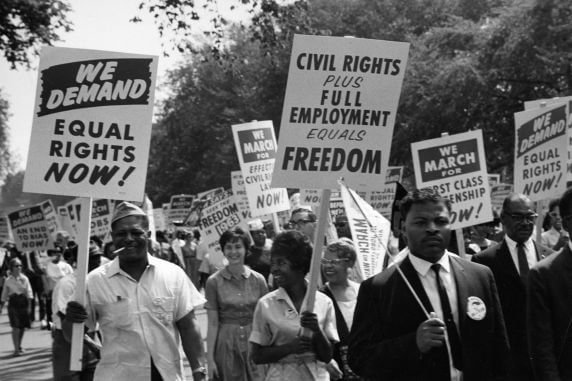
The extremity of these beliefs led to the largest genocide of the 20th century, The Holocaust, in which millions of people were systematically murdered. The largest group to be affected was the Jewish People, with 6 million Jews losing their lives. However, in addition to these terrible racism facts, the Nazis also slaughtered members of several other ethnic groups, such as Slavs and Gypsies. They also targeted groups based on their political beliefs, such as communists; their national affiliations, such as Soviet Prisoners of War; and their sexuality, as in the case of homosexuals. The mentally and physically disabled were also targeted. Overall, approximately 11 million people lost their lives in this genocide, making it one of history’s most extreme examples of state-sanctioned racial and ethnic persecution.
Racism Is Condemned by the United Nations
There are some important racism facts relating to the manner in which the term is defined in International Law. In 1966, The United Nations officially adopted the following definition of racial discrimination;
‘ any distinction, exclusion, restriction or preference based on race, color, descent, or national or ethnic origin that has the purpose or effect of nullifying or impairing the recognition, enjoyment or exercise, on an equal footing, of human rights and fundamental freedoms in the political, economic, social, cultural or any other field of public life ‘
Racism Is Banned by the European Union
The European Union also officially banned all forms of racism in 2001, in a Charter of Fundamental Rights of the European Union. Within the charter, article 21 clearly prohibits;
‘ discrimination on any ground such as race, color, ethnic or social origin, genetic features, language, religion or belief, political or any other opinion, membership of a national minority, property, disability, age or sexual orientation and also discrimination on the grounds of nationality ‘
Scientific Racism Has Been Historically Damaging
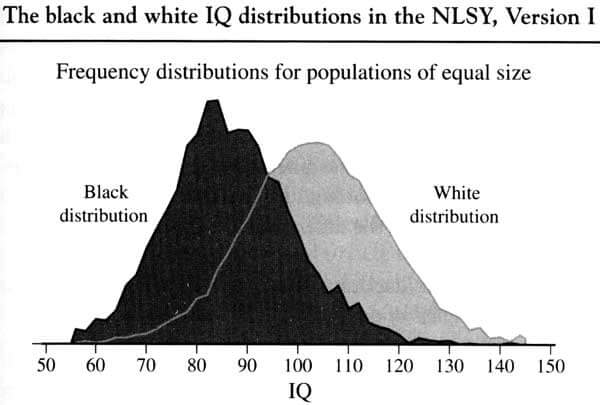
In some of the historical racism facts we have covered, racism was a state-sanctioned activity. In such times, false and prejudiced “scientific” theories were often used to justify atrocious acts. During the 19th century, anthropological publications proposed a hierarchy of peoples based on racial characteristics, generally to argue that Caucasian people were more intelligent, more civilized and so on. During the New Imperialism period, these ideas were often used to justify the imperialism and colonialism of white European cultures maintaining empires abroad.
Nowadays, certain publications can still be seen to be publishing forms of scientific racism, and are widely denounced as such. One example is The Bell Curve, a 1994 book by Richard J. Herrstein and Charles Murray. In it, the two argue that genetic factors play the most significant role in human intelligence, more so than environmental ones. They took data which showed that white people tended to outperform black people on IQ tests as evidence that white people were, on average, more intelligent. This garnered a great deal of criticism, and helps to show why scientific racism is actually a pseudo-science, since the book took real data, but is accused of drawing unjustifiable and unscientific conclusions from it.
Racism Is Not Just Practiced by a Majority towards a Minority
In many of the racism facts and cases which we have considered so far, racist beliefs were used in societies in order to persecute minority groups. However, since racism is defined as any beliefs or behaviors which involve discrimination based on race or ethnicity, there are many racism facts which do not include majority involvement. In the United Kingdom, for example, there are racial tensions between several ethnic minorities. In the city of Birmingham, there are long standing tensions between black and South Asian communities. In France, too, there have been escalating tensions in recent times between Jewish and Muslim communities.
Neo-Nazism Is a Problem on the World Stage
While many racism facts relate to tragic events in the 20th century or earlier, racism is still a social problem today in many ways. One of the clearest examples of racism in modern life is the worldwide movement of Neo-Nazism. Neo-Nazism is a social or political movement which seeks to revive the far-right beliefs held during the Nazi Era in Germany. These include xenophobia,racism, homophobia and anti-Semitism. Many Neo-Nazis also deny that the Holocaust ever happened. In parts of Europe and Latin America, laws have been passed to prohibit the expression of Neo-Nazi sentiments, and Nazi related symbols are banned.
Crime Statistics Show Racism in the Judicial System
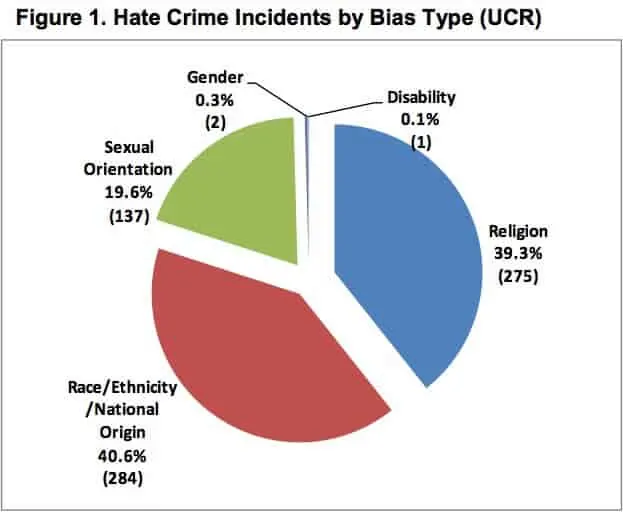
While racism facts related to Neo-Nazism and other far-right movements show explicit racism, another prevalent issue in modern Western societies is racism at an institutionalized level. This concerns racial stereotyping in the way civilians are treated by the police and courts. For example, studies suggest that in the USA, police are much more likely to pull over and frisk Latino or black people than they are whites. In New York, up to 80% of stop and searches were done on non-whites and, of those stopped, 85% of the non-white people were frisked, compared to only 8% of white people. The trend continues once an arrest has been made − African Americans are 33% more likely to be detained pending trial, receive 10% longer sentences than white people for the same crimes and, in the case of drug defendants, are 20% more likely to receive a prison sentence than their white counterparts.
Anti-racism Has Been a Strong Force in History
One of the more positive racism facts is that throughout history, powerful movements of anti-racism have existed to oppose discriminatory beliefs and actions. Generally, anti-racism promotes the notion of an egalitarian society, in which people are not discriminated against by race or ethnicity. In historical cases, organizations such as the Anti-Apartheid Movement have helped to oppose racist states. Trade embargos, hate crime laws and bans on racist speeches are also used by nation states to try to combat the spread of racism.
There’s an International Day for the Elimination of Racial Discrimination
On every March 21 since 1966, the UNESCO organization has held an International Day to observe the fight against racism. This day was chosen in order to mark the Sharpeville massacre in South Africa which happened in March 1960. On that day, the police fired into a crowd of peaceful students protesting against the apartheid, killing 69 and wounding many more. The International Day has a different theme each year, and is marked by conferences and campaign events to raise awareness of racism facts. In South Africa the day is recognized as a national holiday to commemorate those who died.
In 2008, Barack Obama Became the First African-American President
In 2008, Barack Obama won the American Presidential Election with 52.9% of the vote, and became the first African-American President of the United States. He had initially announced his intention to run for president in front of the Old State Capitol building, Illinois. This was a significant site, since this was where Abraham Lincoln had delivered his famous “house divided” speech. After he had won the election, Obama made a victory speech in Grant Park, Chicago. This was another symbolic choice for those who knew their racism facts, since the park had witnessed protests against violence and police brutality during the 1968 Democratic National Convention.
Martin Luther King Made History with a Speech
Martin Luther King, Jr. was an American pastor and activist who played an extremely important role in the Civil Rights Movement. He promoted the use of non-violent civil disobedience and was a key figure in the struggle for race equality. In his famous “I Have a Dream” speech, delivered in 1963, King called for an end to racism, noting that even a century after the Emancipation Proclamation, The negro is still not free. Nearing the end of his speech, King departed from his text and declared I have a dream, before going on to describe his vision of a free and equal society.
In Britain You Can “Love Music Hate Racism”
There are many positive racism facts regarding anti-racism campaigning, and organizations which raise awareness in the fight against racism. In the 1970s in Great Britain, white nationalist groups such as the National Front were on the rise. After several rock stars, including Eric Clapton and David Bowie, appeared to make racist and xenophobic comments, others in the music industry decided to make a stand and founded Rock Against Racism. In 1978, 100,000 people marched from Trafalgar Square to London’s East End, then attended an open-air music festival staged to speak out against racism. The concert included bands such as The Clash and Buzzcocks. In the following decades more concerts and marches were held and, in 2002, Rock Against Racism was reborn as the movement Love Music Hate Racism.
Racism Facts – Facts about Racism Summary
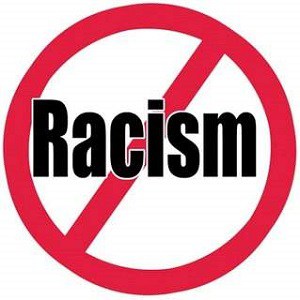 Racism is a complex issue and there are many important racism facts. The term “racism” describes beliefs or actions which involve discrimination or prejudice against a person or group based on the biological and ethnic differences between people. These could be differences in skin color, genetic features, religion, nationality, language and so on. Racism is a negative term used to describe malignant and discriminatory practices. Though many historic and tragic world events have been based on state-sanctioned racism, racist beliefs and behaviors are now condemned by many world organizations, such as The United Nations and The European Union. That said, institutionalized racial inequality and discrimination is still a widespread problem in many Western countries.
Racism is a complex issue and there are many important racism facts. The term “racism” describes beliefs or actions which involve discrimination or prejudice against a person or group based on the biological and ethnic differences between people. These could be differences in skin color, genetic features, religion, nationality, language and so on. Racism is a negative term used to describe malignant and discriminatory practices. Though many historic and tragic world events have been based on state-sanctioned racism, racist beliefs and behaviors are now condemned by many world organizations, such as The United Nations and The European Union. That said, institutionalized racial inequality and discrimination is still a widespread problem in many Western countries.
Was this page helpful?
Our commitment to delivering trustworthy and engaging content is at the heart of what we do. Each fact on our site is contributed by real users like you, bringing a wealth of diverse insights and information. To ensure the highest standards of accuracy and reliability, our dedicated editors meticulously review each submission. This process guarantees that the facts we share are not only fascinating but also credible. Trust in our commitment to quality and authenticity as you explore and learn with us.
